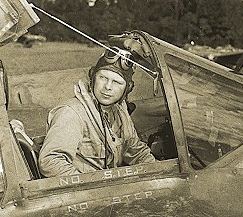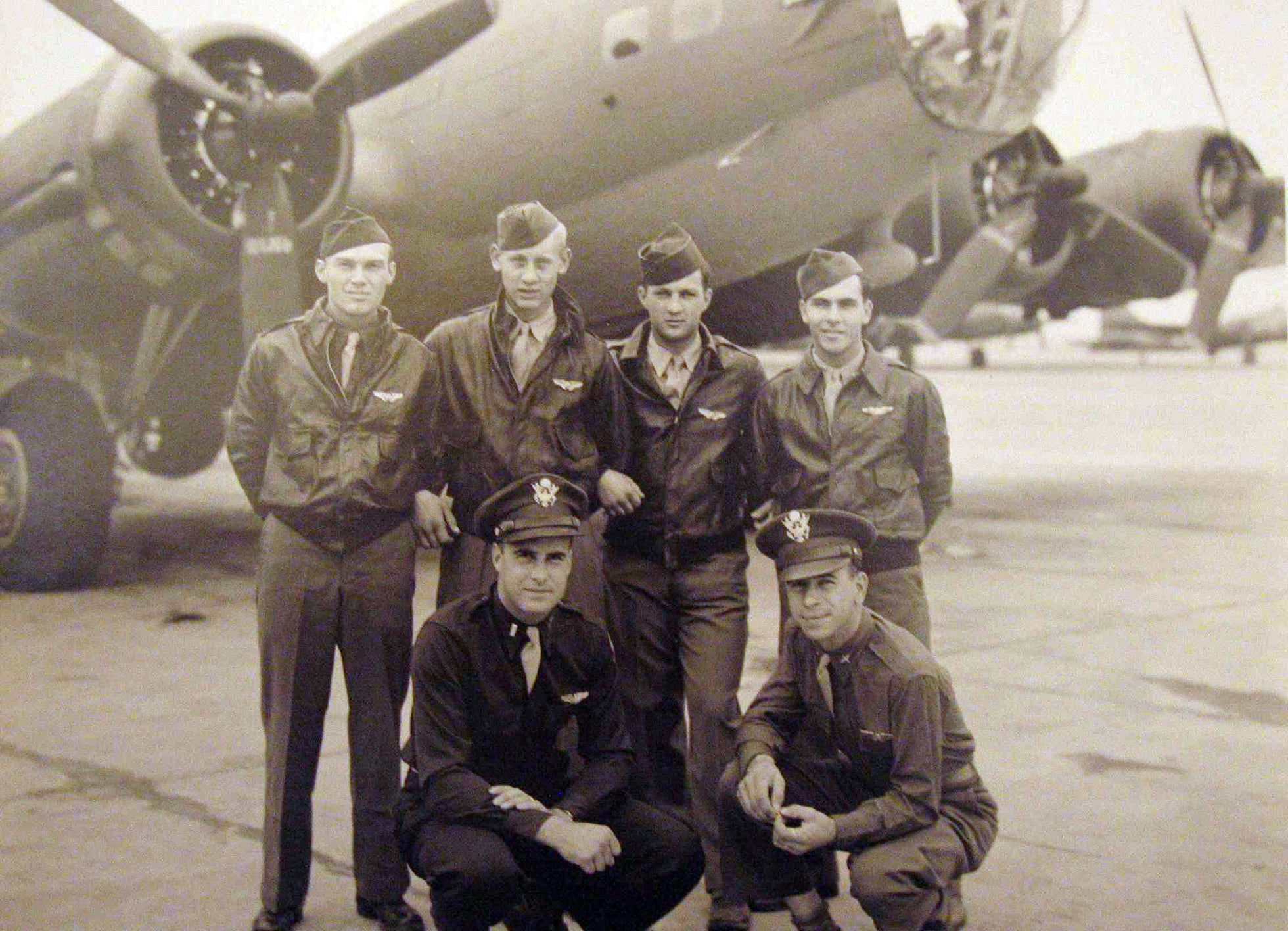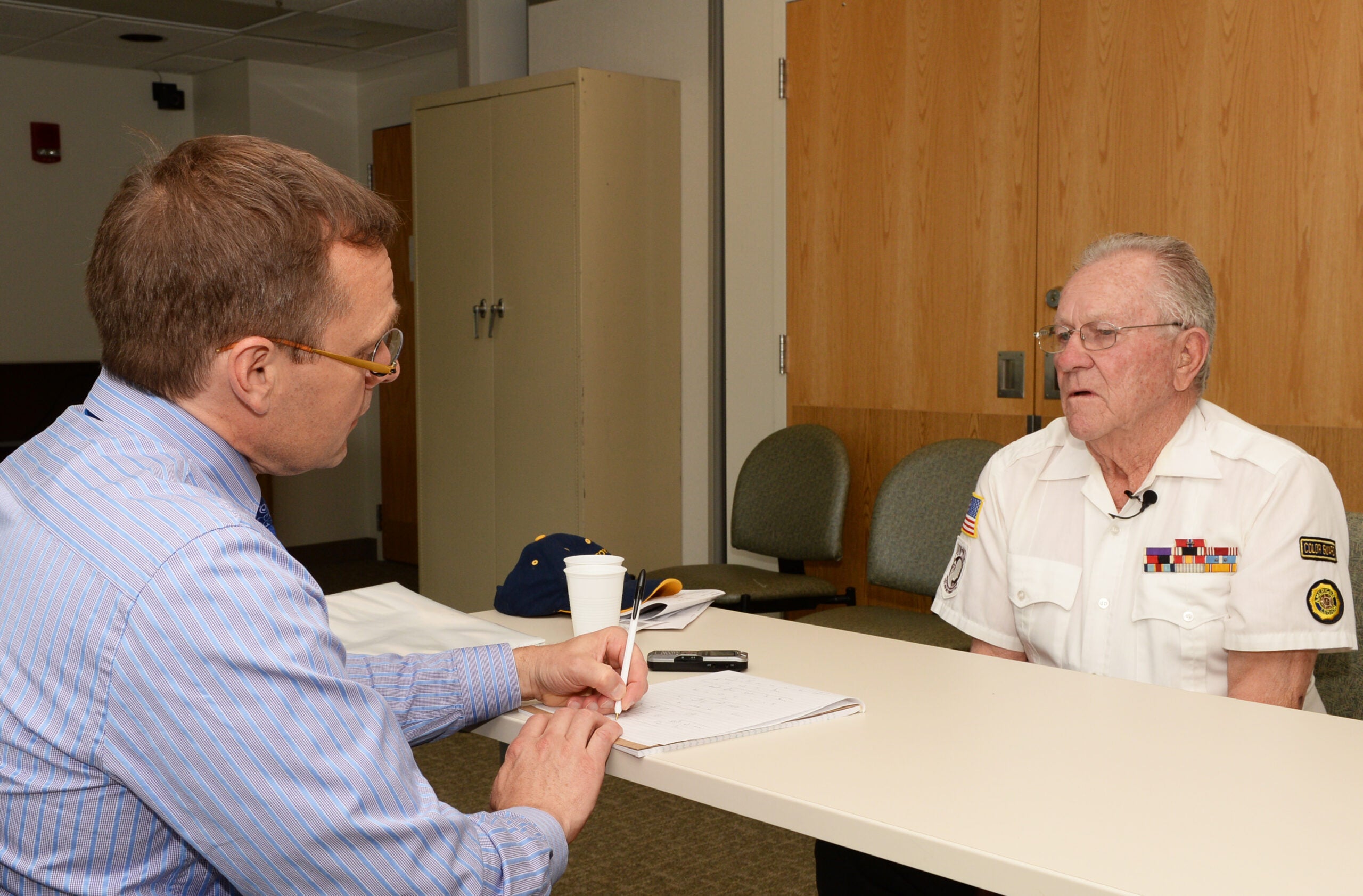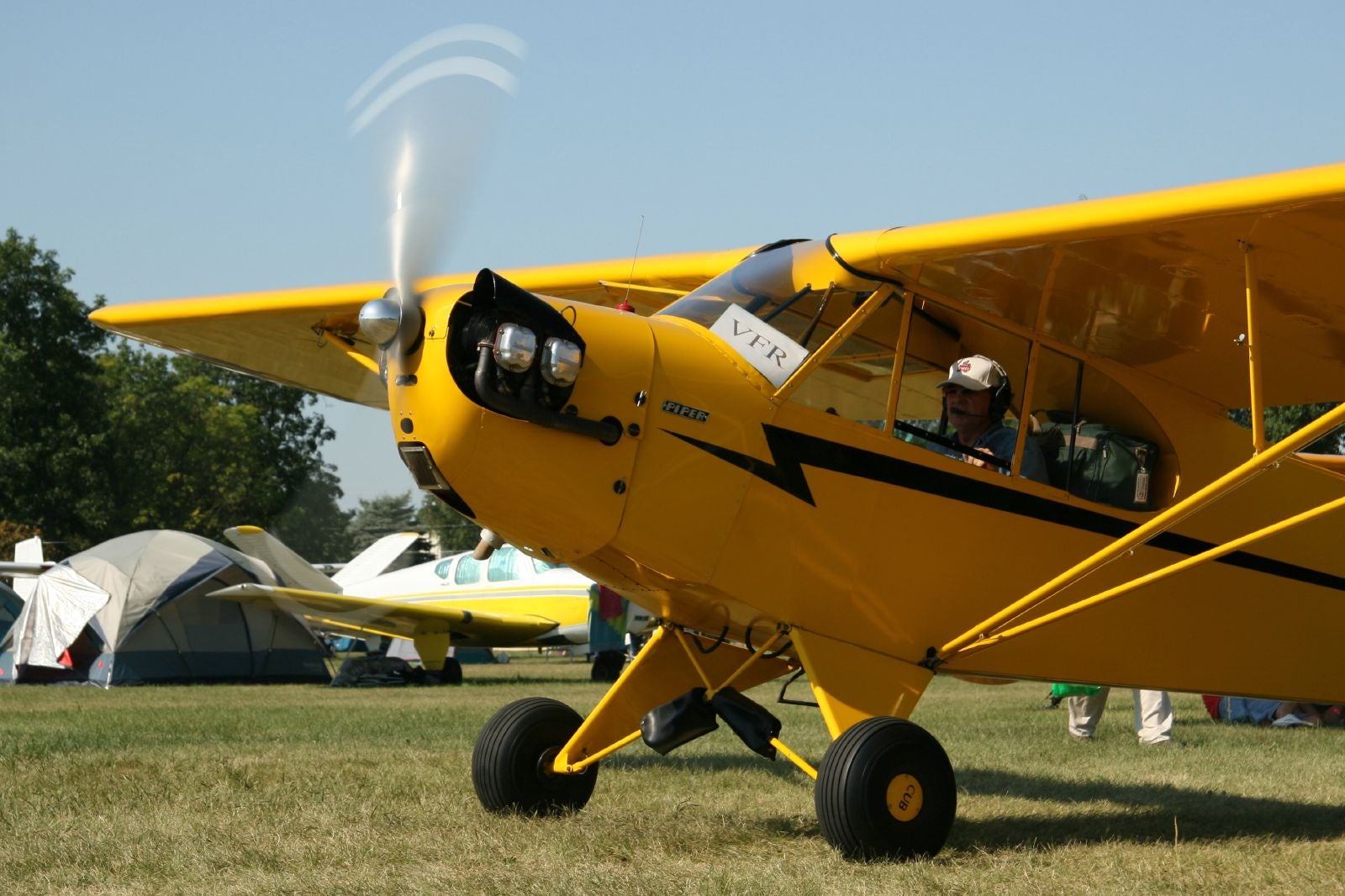Being a national hero wasn’t Richard Bong’s goal.He grew up on a farm in the northern Wisconsin town of Poplar.And he went on to shoot down more enemy planes in any war in U.S. history as a World War Two fighter pilot in the Pacific, becoming known as America’s Ace of Aces.
Richard Ira Bong was a good guy. That’s the way Marvin Peterson sees it. He was Bong’s best friend growing up in Poplar. But he says no one figured he’d be a war hero.
“Not back in those days,” he says.”Of course we were strictly small town people. Whatever he did he tried to do well.”
Stay informed on the latest news
Sign up for WPR’s email newsletter.
Peterson and Dick Bong went to the same church, the same 4-H club, the same school and to the State Teachers’ College in nearby Superior. He says his buddy liked to play hockey and baseball, sang in the church choir, and played the coronet. But mostly, someday, he wanted to fly.
“He was interested in building model airplanes and that type of thing,” he says.”Any flying was a big event back in those days. It wasn’t a common thing the way we think of today and anytime an airplane came near our town, why it was quite an event. Sometimes it would land in the hay field out in back of our school and sometimes just went over but it was a big event.”
Dick Bong was seven years old when President Calvin Coolidge made Superior the summer White House in 1928.Coolidge liked to fish, and the world-renowned Brule River loaded with brown and brook trout was less than an hour from Superior.
Bong’s younger sisters Gerry and Joyce — he had six sisters and two brothers — remember that twice a day a plane would fly over the Bong family farm, carrying mail for the President.
“We were out there playing and all of a sudden we heard this plane coming up overhead,” Gerry says.”And of course you didn’t see an airplane very often so everyone ran yelling ‘Airplane! Airplane!’ because everyone got excited when they saw one. And that was his plane that we saw.”
Joyce adds, “And we run out every time we hear a plane, you run out.”
Bong enlisted in the Army Air Corp in early 1941.He got his first of 40 kills in a dogfight over New Guinea in the South Pacific in late 1942.
By the time he returned home on his first leave in more than two years in November
1943, Richard Bong was among the leading U.S. ace pilots.Although he didn’t like the limelight — he especially hated giving radio interviews — he was in great demand.The reigning homecoming queen at Superior State College was Marjorie Vattendahl.She and her sorority sisters got him to agree to help crown the new royalty at the homecoming dance.remembered the moment in a 2002 interview.
“When he walked into the gymnasium where the thing was taking place, you could just hear, I called it like the buzzing of blue-flies,”Vattendahl recalled in 2002.”You could just hear this murmur. ‘There he is! There he is!’”
And if Hollywood were to write the story of Richard Bong, they’d have to dump their own stereotype an ace fighter pilot. His fellow pilot Walter Markey says he wasn’t the swashbuckling, hard drinking type.
“I remember in one instance, where he was trying to live up to the fighter pilot image,” he says.”He took a shot of whatever it was, gin or vodka or whatever, ‘How can anybody drink this stuff?!’ He almost choked.”
Markey says his friend was honest and always true to his word. And he was determined to end the war as soon as possible.He’d do that by diving into as many air battles as he could, and win them all.
This is part one of a four-part series on Richard Bong that we’re airing on Wisconsin Public Radio this week.You can see more photos and listen to a documentary Mike Simonson produced on Bong by clicking here.
Wisconsin Public Radio, © Copyright 2024, Board of Regents of the University of Wisconsin System and Wisconsin Educational Communications Board.




